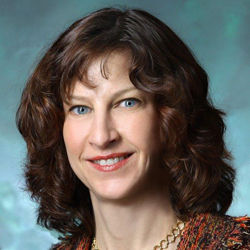Partner Content
“It is a misconception that ophthalmology only involves the eye and vision. Many systemic diseases can be first diagnosed in the eye, and many systemic diseases can affect the eye.”
Shannath Merbs, MD, PhD, professor of ophthalmology & visual sciences at the University of Maryland, specializes in cosmetic and reconstructive procedures of the eyelids, orbit, and tear drainage system. Here, Dr. Merbs discusses complexity of the human eye and treatments for thyroid eye disease (TED).
What inspired you to become an ophthalmologist?
During medical school, I earned a PhD studying the chemical reactions in the eye that are responsible for color vision. Through that research, I was exposed to the beauty of the eye. Growing up, I was always good at making things and fixing things, and I realized as an ophthalmologist, I could combine my fix-it mentality and skills with my love of the eye.
What types of eye conditions do you treat?
I treat diseases involving the tissues of the eye, eyelid, and orbit in both adult and pediatric patients, including eyelid cancers, drooping eyelids, traumatic injuries, eyelash misdirection, and tearing conditions.
How does Thyroid Eye Disease affect the eyes?
TED mainly affects patients with hyperthyroidism and is an autoimmune condition where the eye muscles, eyelids, tear glands, and fat behind the eye become inflamed. The eyes can become teary and red, the eyelids can become swollen, and the eyes can bulge forward. Individuals with TED can also experience blurred or double vision.
Who is at risk of developing the condition?
Women are affected five times more often than men. Notably, smoking is linked to the development and worsening of TED, so anyone diagnosed with the condition should stop smoking. Radioactive iodine treatment for hyperthyroidism can also worsen TED.
When should patients be evaluated, and by whom?
Patients with eye symptoms and a history of thyroid disease should be evaluated by a specialist who can perform a complete eye exam, including orbital imaging if indicated. Ophthalmologists who specialize in oculoplastic surgery or neuro-ophthalmology most often manage patients with TED.
What are the current treatment options for those with the condition?
TED is typically divided into two phases. First is the active phase that usually lasts between six to 24 months and is characterized by inflammation. Treatment is focused on controlling the inflammation with steroids or low dose radiation to the orbits, if needed, to relieve the eye symptoms. An exciting new medication given intravenously has been shown to improve symptoms in more than half of TED patients in the acute phase.
In the second or stable phase, once the eye and eyelid positions have stabilized, treatment is typically surgical and is aimed at making the eyes less prominent and relieving double vision.
What can happen if a patient does not receive treatment?
Patients with bulging eyes that don’t close all the way are at risk of cornea infection and scarring. Rarely, the swelling of the orbital tissues can be so severe that the patient can lose vision because of pressure on the optic nerve.
Tell us about current vision research underway.
The current vision research at the University of Maryland is groundbreaking and has far reaching potential to improve vision. Our multiple, NIH-funded projects involve advanced imaging technologies, as well as new treatments for blinding diseases like glaucoma, ischemic optic neuropathy, retinopathy of prematurity, and trachoma.
When it comes to the eyes, what are common mistakes people make?
One of the biggest mistakes people make is sleeping with their contact lenses in. This significantly increases their risk of a corneal infection, which can lead to vision loss. Another is using a drop advertised to reduce redness. Continued use of these drops can lead to rebound redness and make the eyes even more red. Basic artificial tear drops do not have that risk.
What is the biggest misconception about the field of ophthalmology?
That it only involves the eye and vision. Many systemic diseases can be first diagnosed in the eye, and many systemic diseases can affect the eye, such as thyroid disease, diabetes and high blood pressure.
What continues to fascinate you about the human eye?
I continue to be amazed by the beauty and complexity of the eye and the process of vision. Although only about one inch in diameter, the eye is amazingly complex. The tissues are highly specialized, and the eye has to successfully communicate with the central nervous system in order for us to be able to see.
 MEET THE EXPERT:
MEET THE EXPERT:
Shannath Merbs, MD, PhD, FACS
Board Certified Oculoplastic Surgeon
To schedule an appointment, call 667-214-1111.

